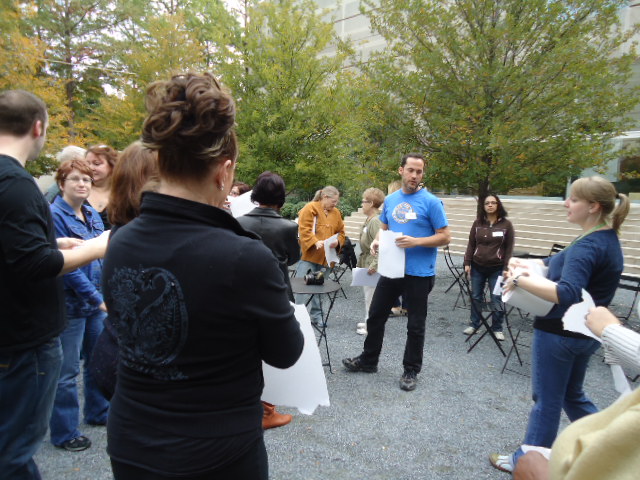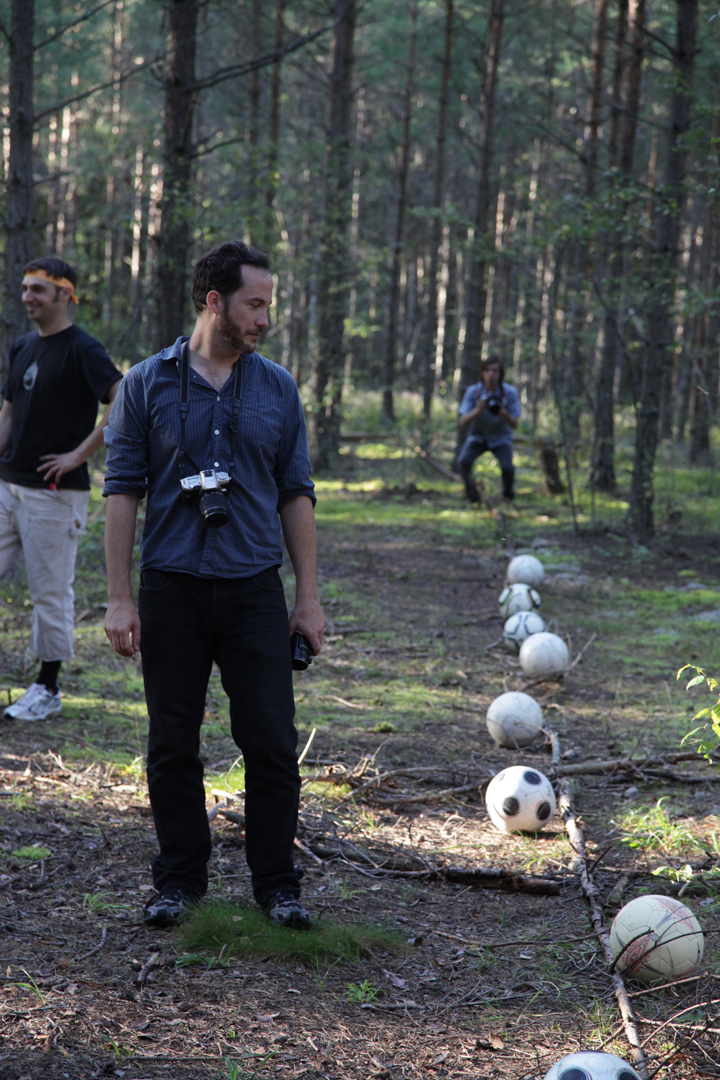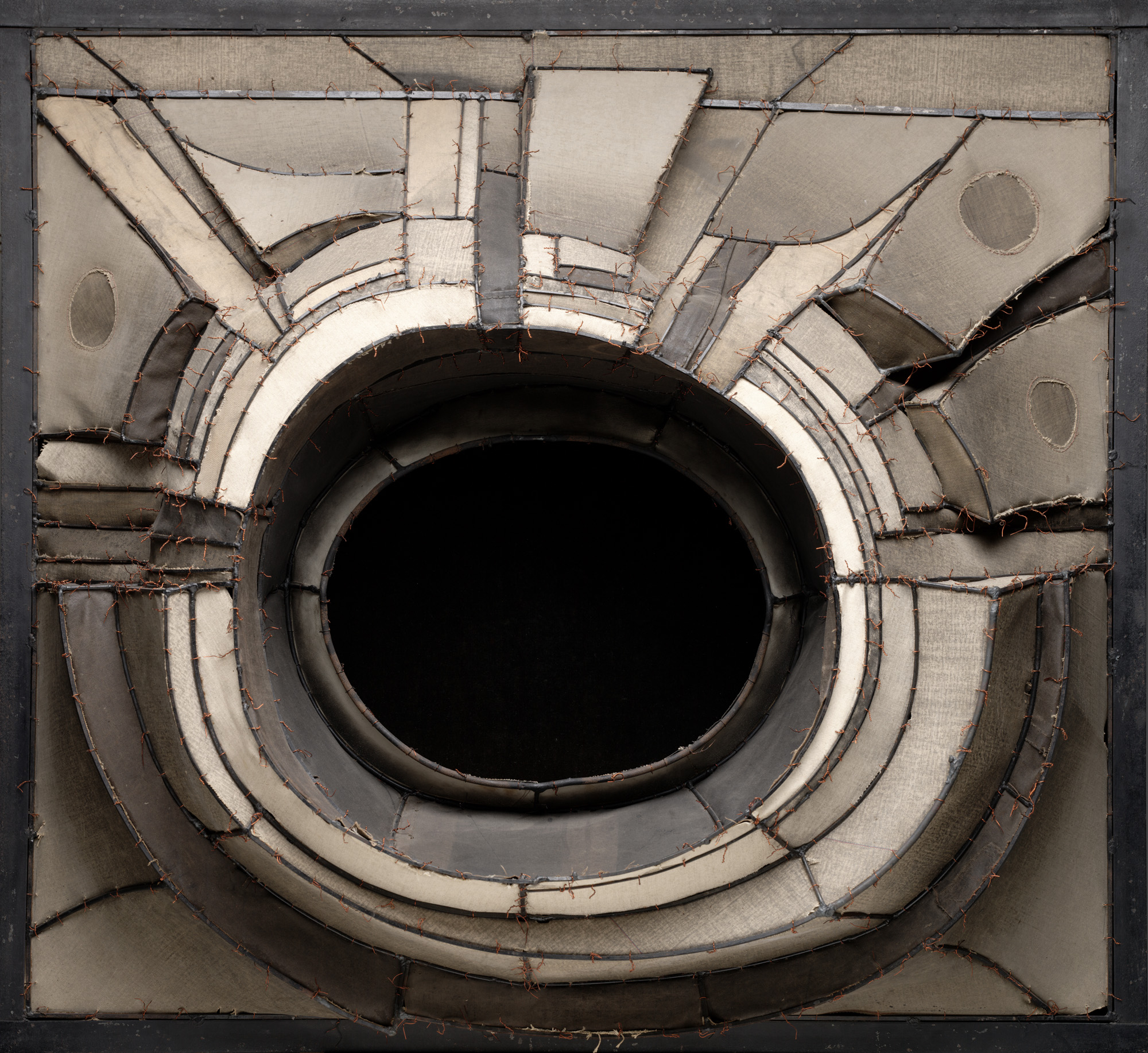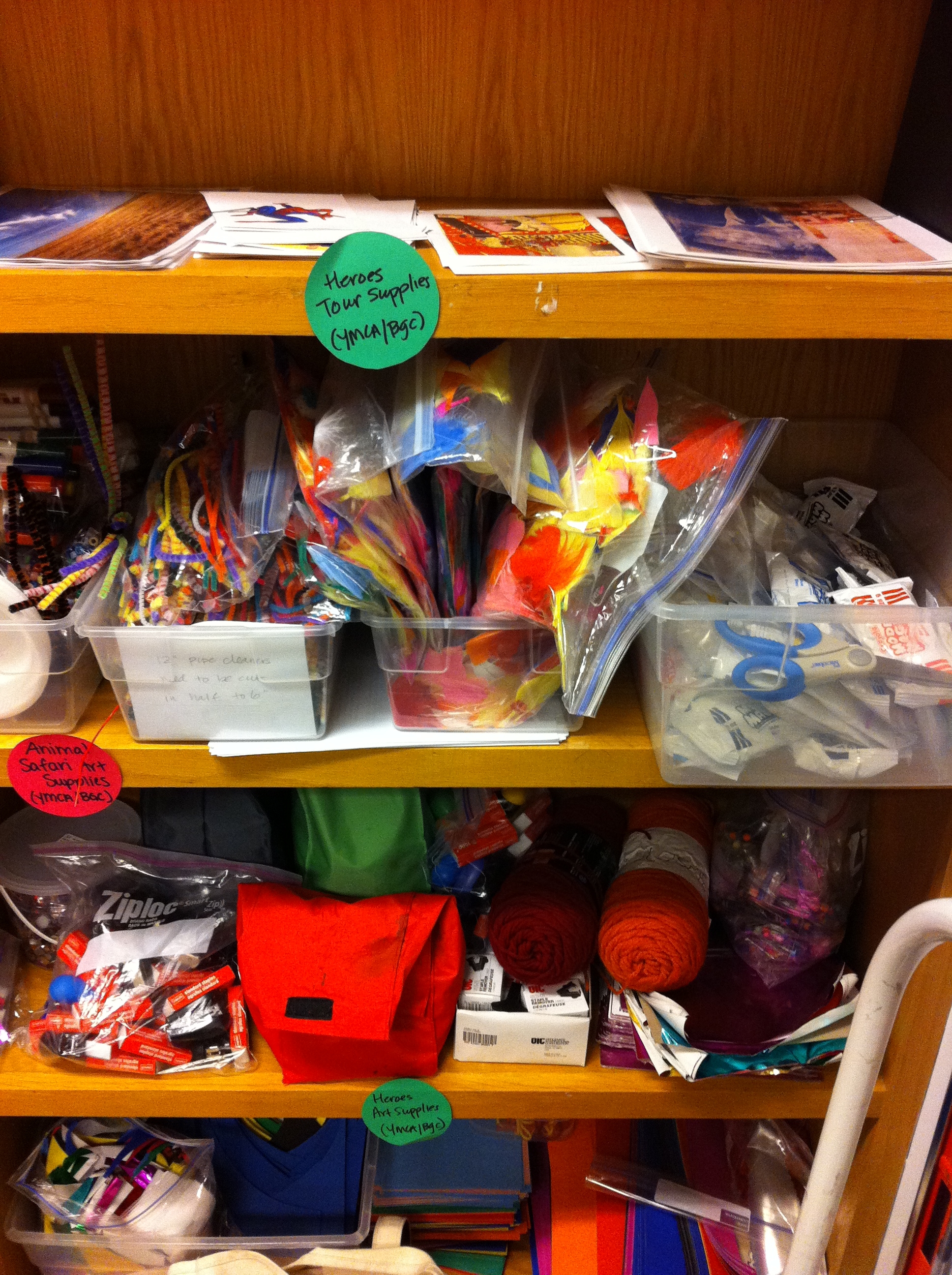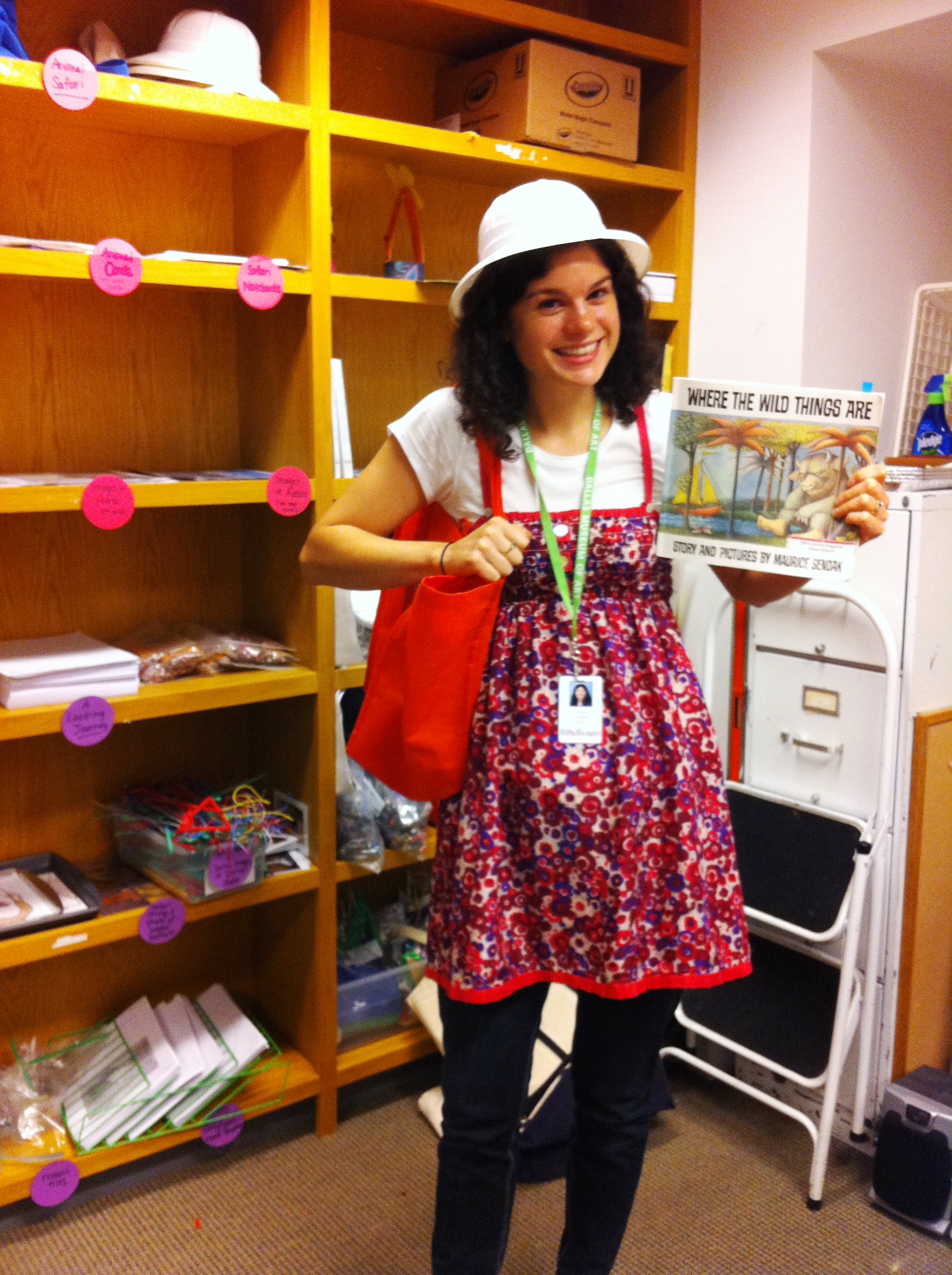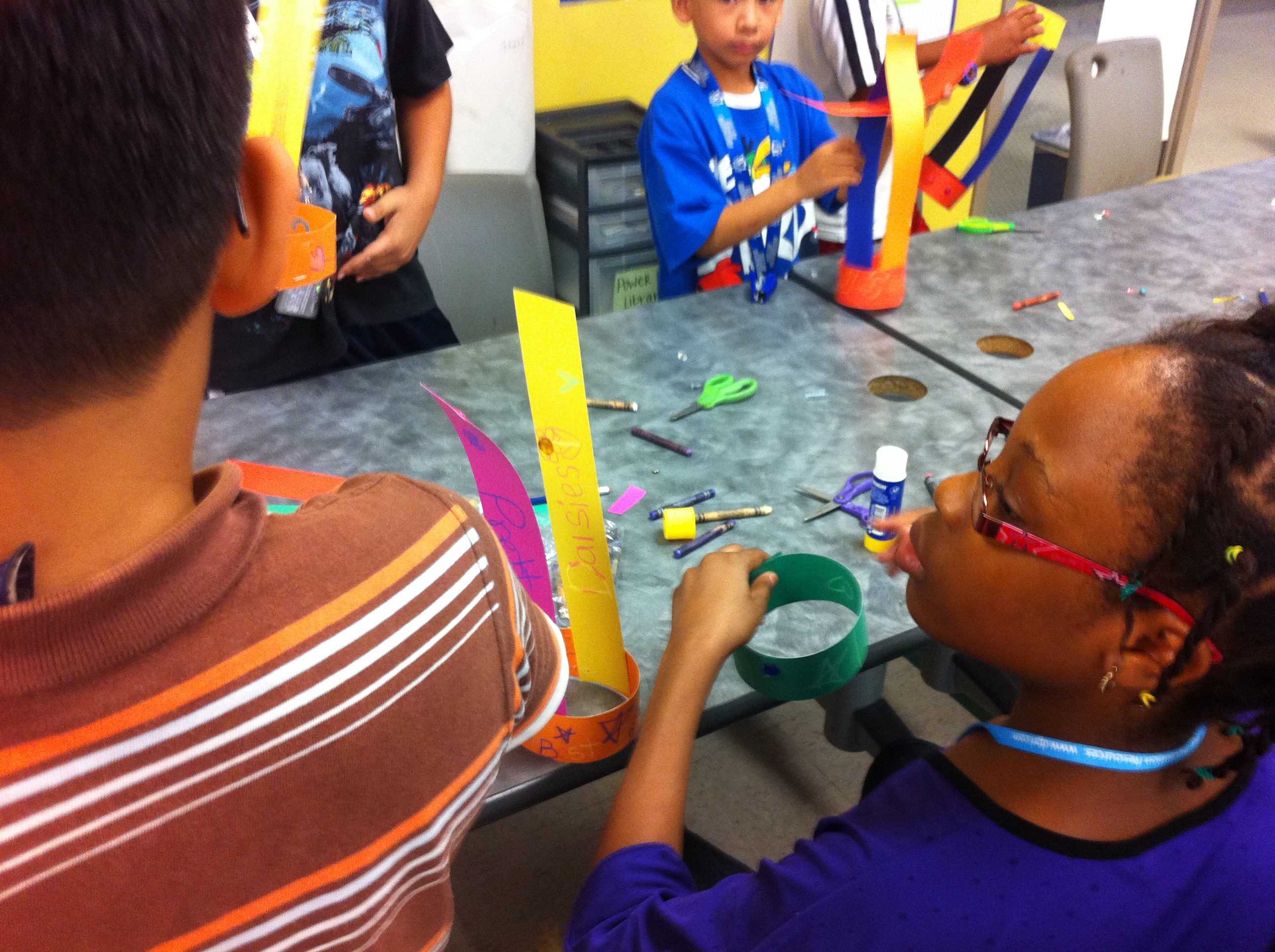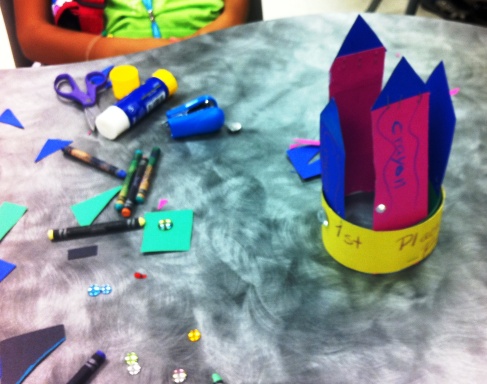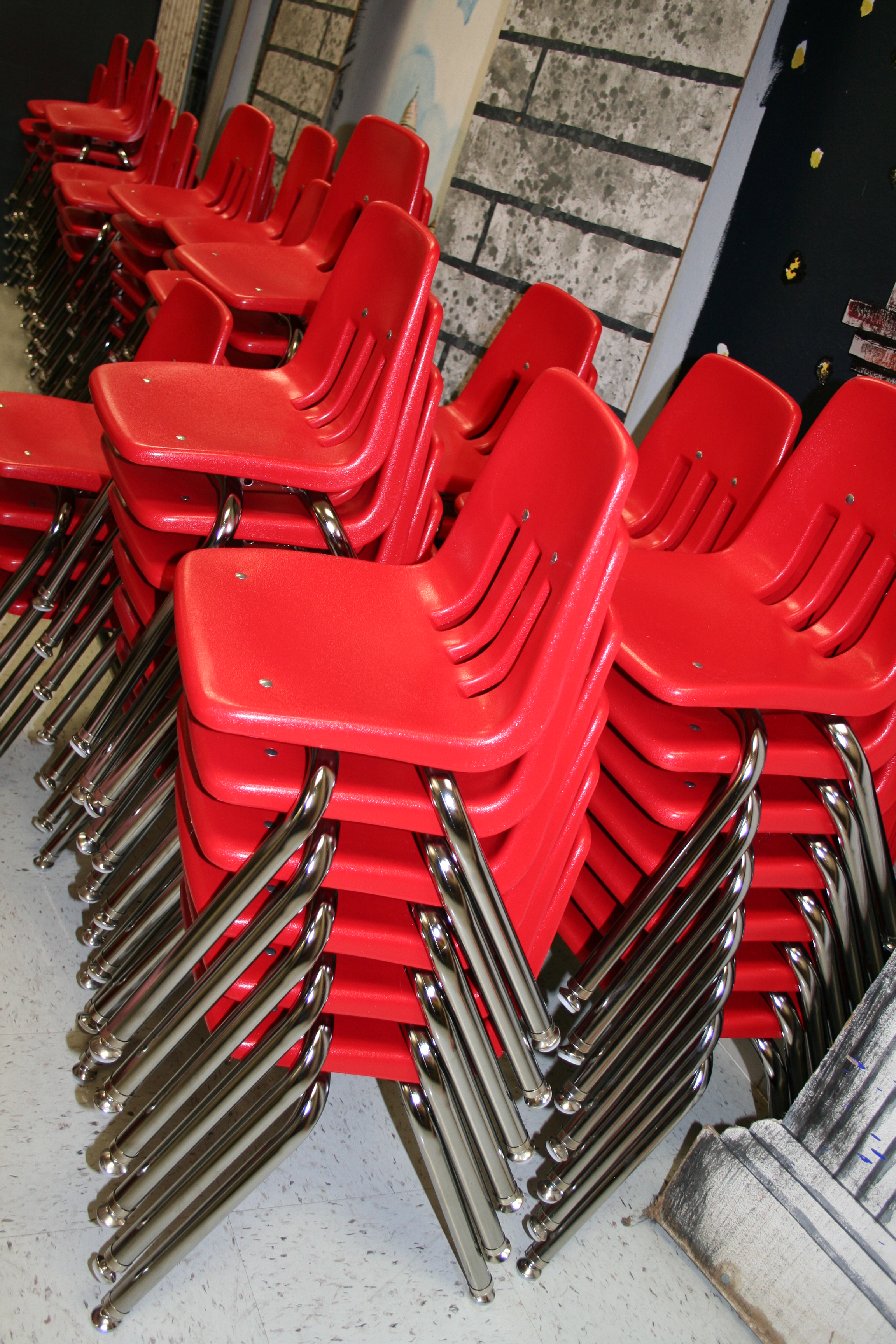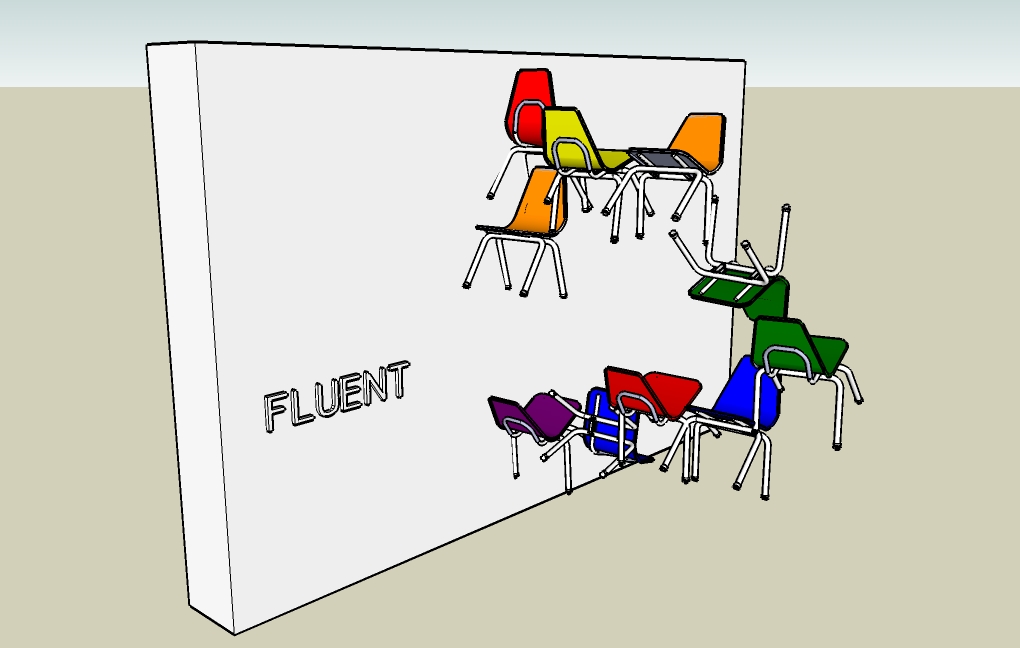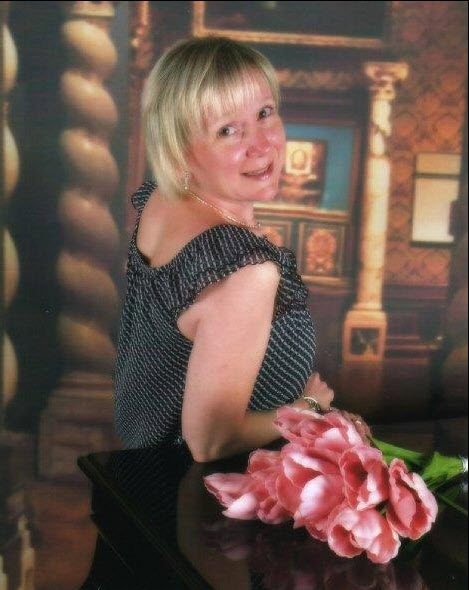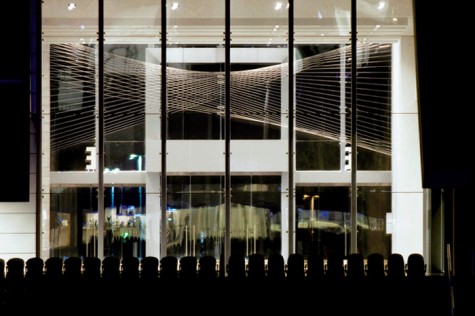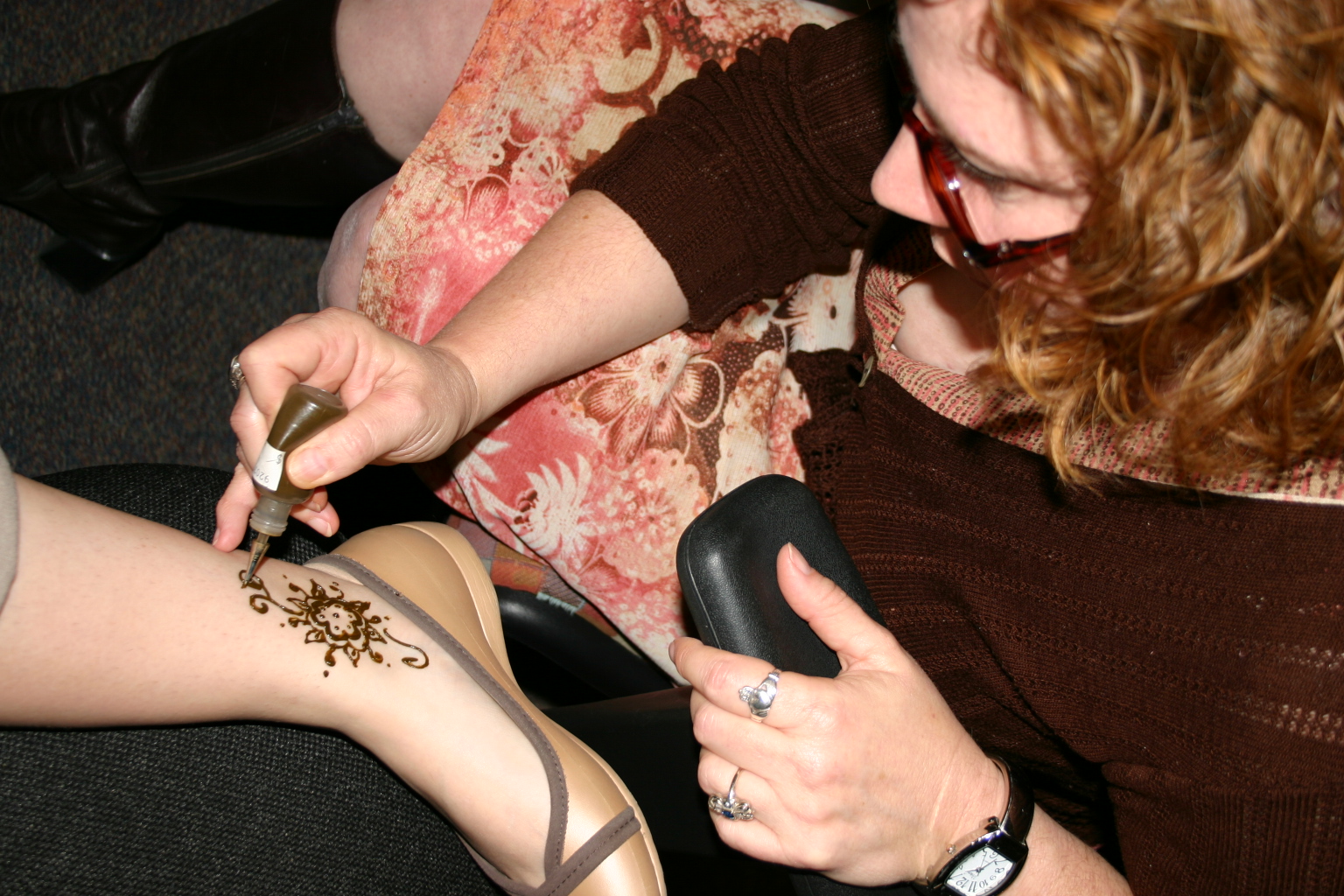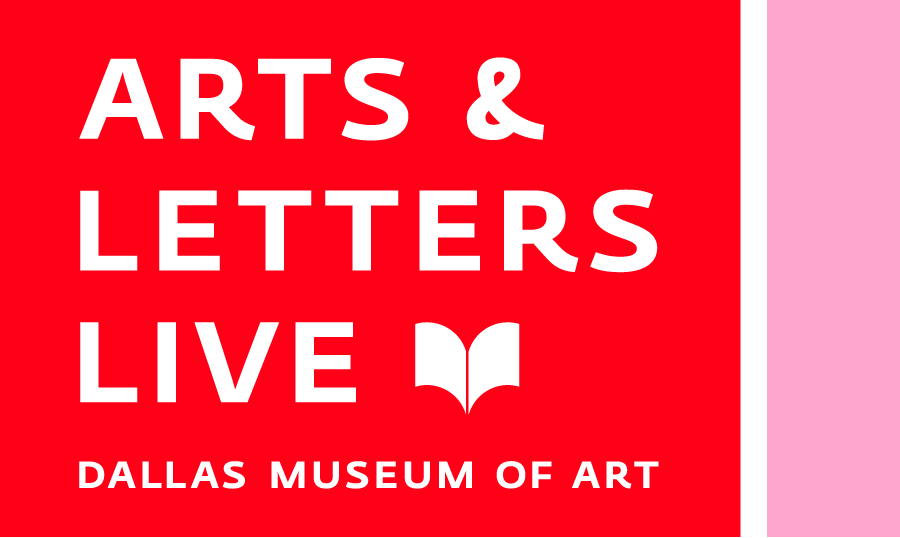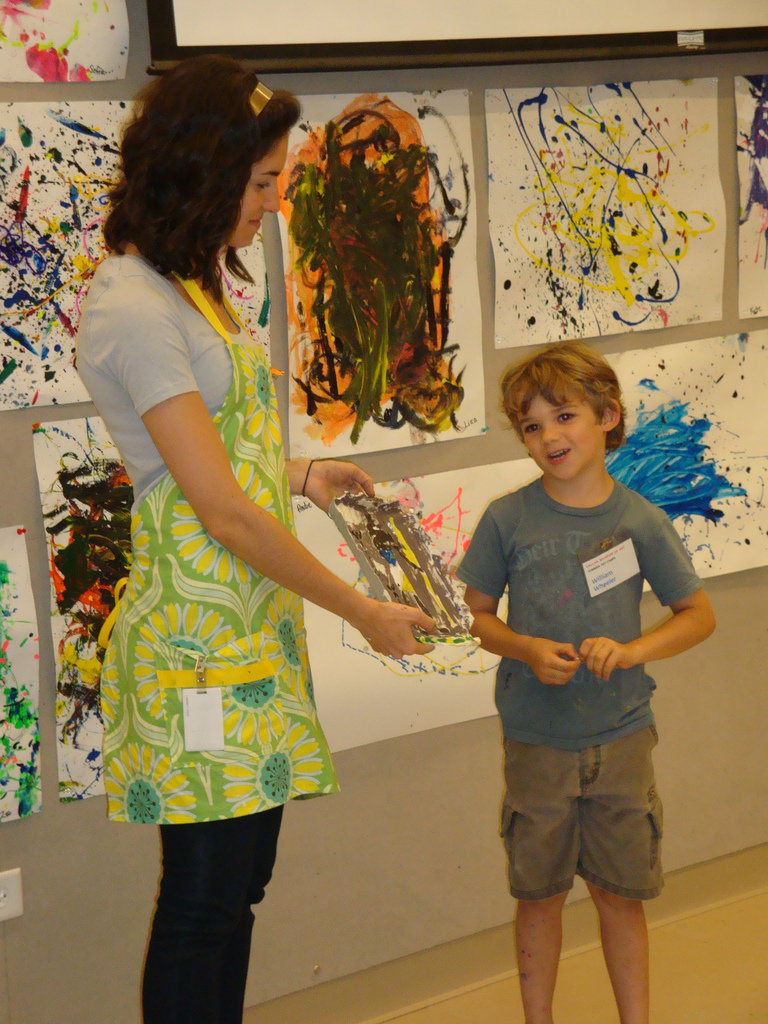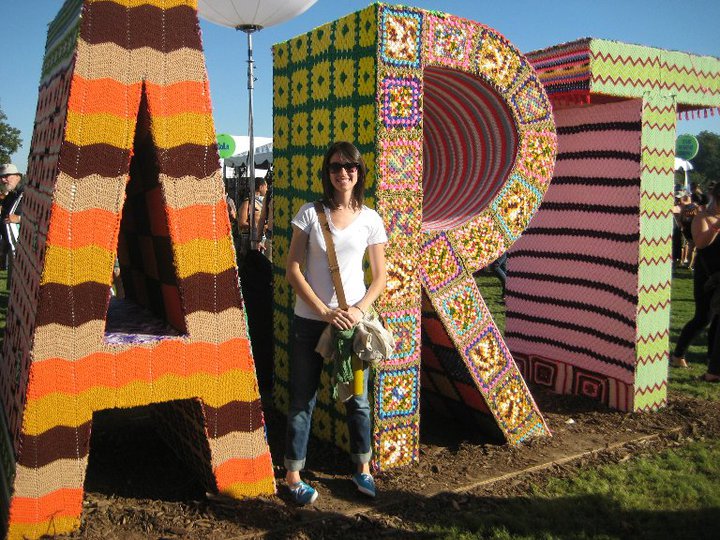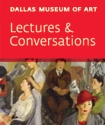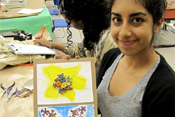We first met artist Tom Russotti in July, after he contacted us about working together during his time at CentralTrak, The University of Texas at Dallas’ Artists Residency program. We were immediately intrigued by his interest in combining art and sport, and have collaborated with Tom on multiple programs including the Art & Games Teacher Workshop, C3 Artistic Encounters, training for docents, Thriving Minds After-School program, Booker T. Washington Partnership Learning Lab, and Late Night Creativity Challenges.
Describe what you do.
I’m interested in the connection between art and sport, the idea of sport as an art form, and how all the different elements can be combined to have individual expression. I’m also interested in my own history of playing sports and games, connecting that to other people through playing, and using play as an educational tool.
How did you get into games?
I invented a sport as a way of getting more active and more social in my artmaking. I was a documentary photographer previously, so I was driving around by myself and taking pictures, and editing alone in the darkroom. I hadn’t played sports in a while, and thought it would be fun to get out and play and make sports fun for me again. I also realized this could be an art form, something I could pursue artistically, and I could get other people involved by creating events.
My first invented game was called Wiffle Hurling, a new version of the sport of hurling, one of Ireland’s national sports. Hurling is a dangerous sport – it looks like rugby with large baseball bats. I lived in Ireland for a year, and tried to join the hurling team at University College Dublin. They said I would lose all my teeth and wouldn’t let me join the team. Fast forward seven years: I had all these wiffle ball bats, and happened to walk by a practice football field with the same lines as a hurling field. It dawned on me to put the two together and make it a social event with uniforms, cameras, and friends. It turned into spectacle and was really fun.
What motivated you to contact us?
I was involved in a project in England, where kids made up their own sports and played them in a festival. Since I couldn’t go to England, I told them I’d work with some youth groups here and have these groups invent sports and send them over. They would have this international festival/competition, and bridge the gap between England and Dallas. I started by calling the YMCA, and they said I should talk to the DMA because they do all sorts of afterschool programs, and they’d probably be into this.
What has been your most memorable project?
Every time an event works, it’s memorable. In Sweden this past August, we had an amazing game of forty people playing soccer with ten balls in this old forest that once was a soccer field. The first Wiffle Hurling was amazing. The first Drinking and Dancing Competition was amazing. The first Straitjacket Softball was amazing. (You can view all these projects on the Institute for Aesthletics web site.)
Where do you see yourself in five years?
One of the reasons I’ve become an artist is so I can avoid answering that question. I go where projects take me – five years ago, I could never have imagined the projects that I’ve done. Every time I try to over-rationalize what I do as an artist, the projects get boring. When you tap into something you’re doing naturally, that’s when you really create a project that has legs.
Take part in Tom’s upcoming gallery exhibition Hatchjaw and Bassett LLP at Conduit Gallery, open from November 19-December 31.
Melissa Nelson
Manager of Teaching in the Community
